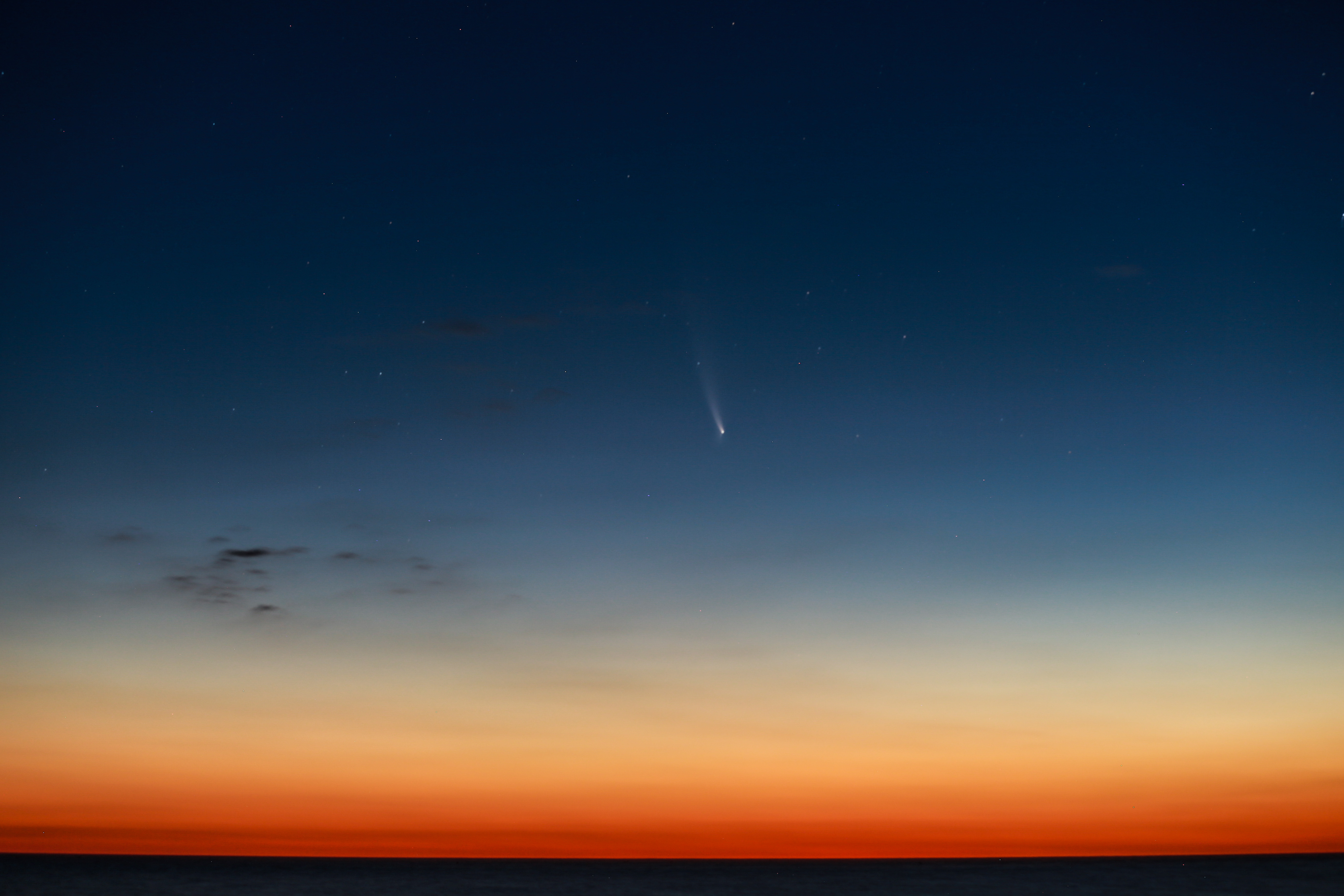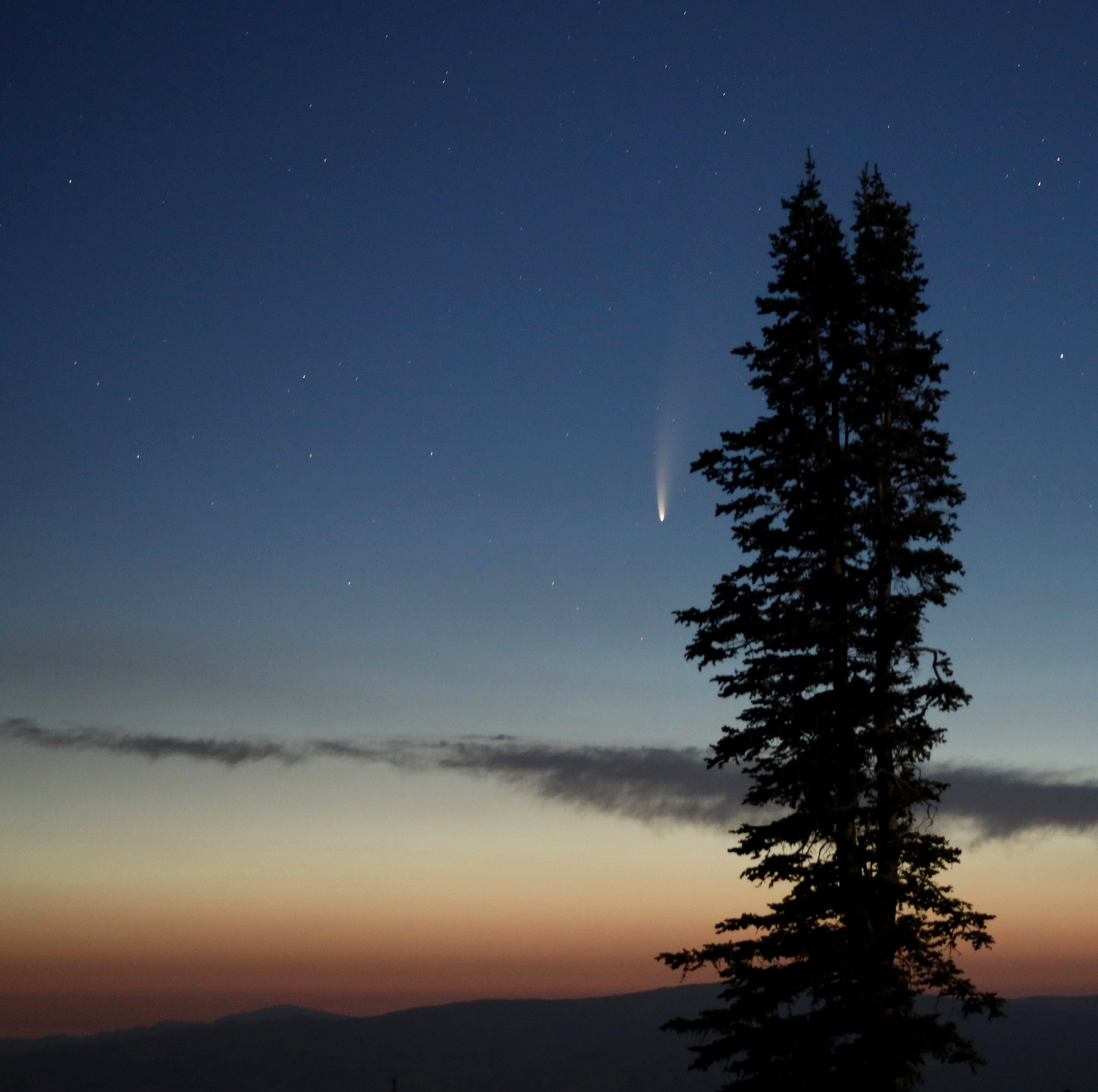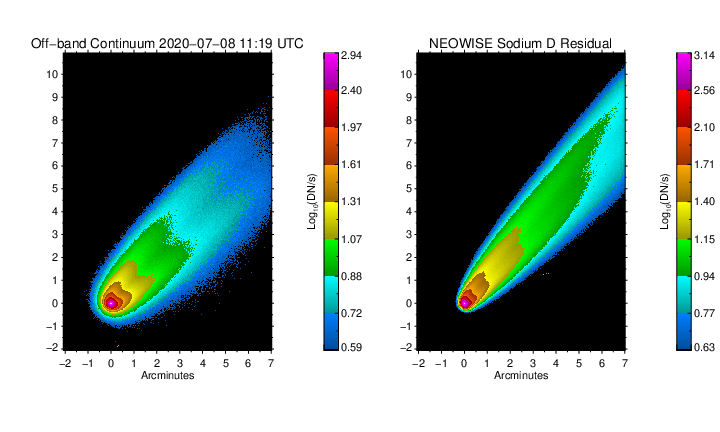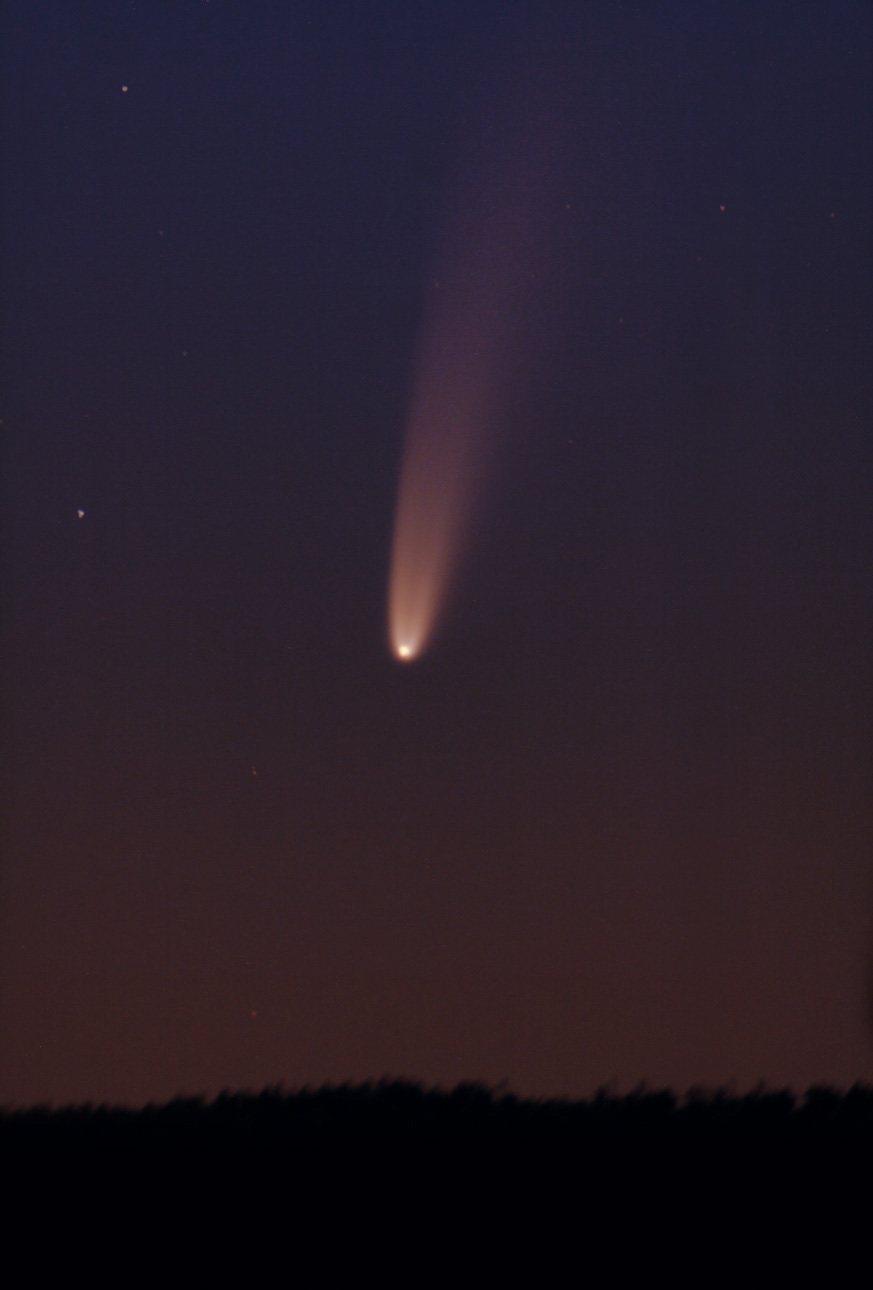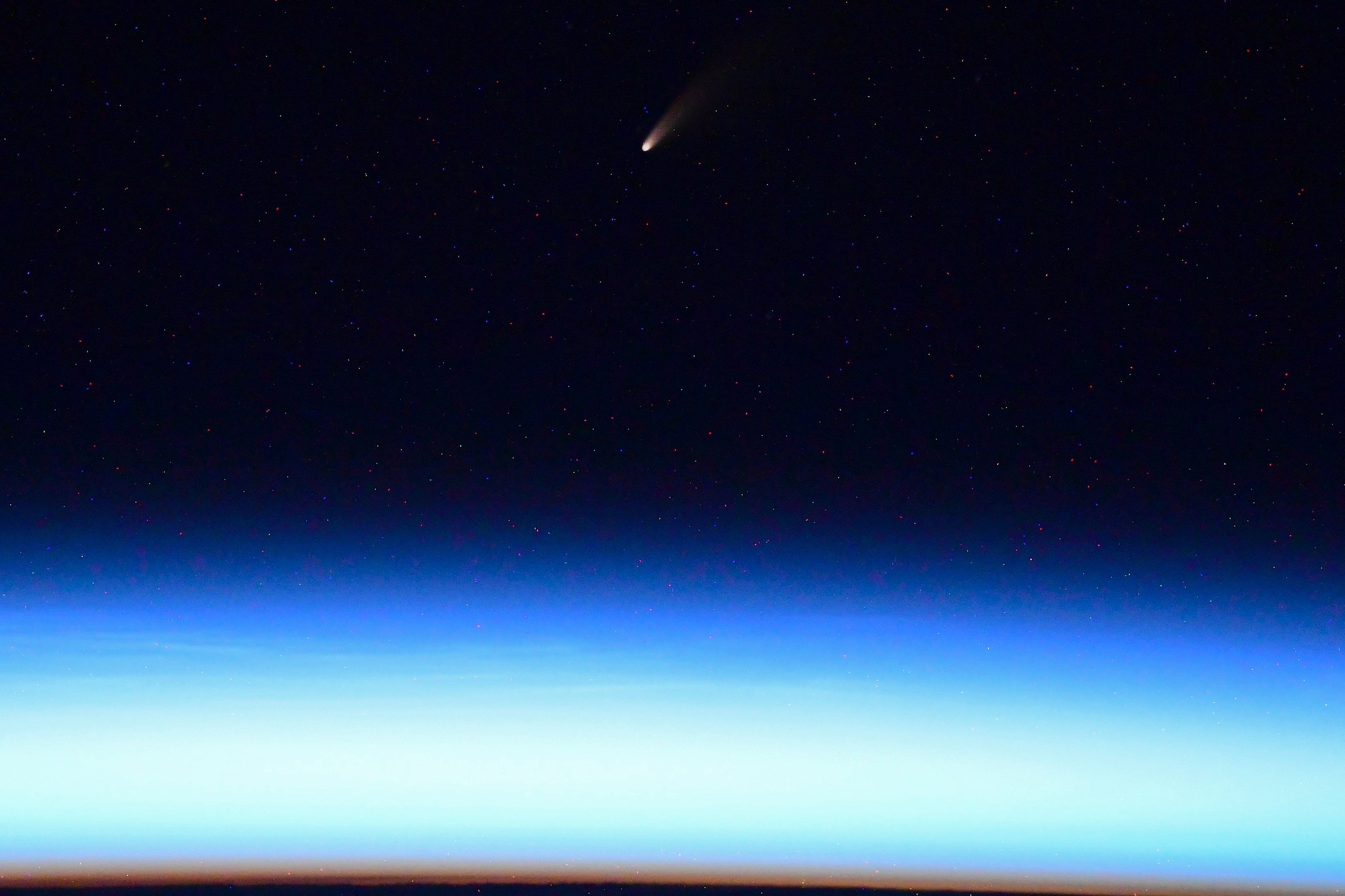Comet NEOWISE: 10 big questions (and answers) about the icy wanderer

If you spot Comet NEOWISE, let us know! Send images and comments to spacephotos@space.com to share your views.
Comet NEOWISE has is delighting skywatchers around the Northern Hemisphere. But what makes this comet so special?
The comet made its closest approach to the sun on July 3 but, until now, was only visible in the sky before dawn. Now, for keen observers in the Northern Hemisphere, the comet has been getting higher in the evening sky, sparkling northwest below the Big Dipper constellation, according to Joe Masiero, deputy principal investigator of NEOWISE (NASA's Near-Earth Object Wide-field Infrared Survey Explorer, the NASA space telescope that first spotted the comet).
One of the most fascinating details about Comet NEOWISE is that it won't return to our skies for another 6,800 years. But that's not the only thing that makes this icy space rock special. So let's take a dive into what makes Comet NEOWISE unique — and a little weird.
Related: How to see Comet NEOWISE in the evening sky now
What is Comet NEOWISE?
Officially known as C/2020 F3, Comet NEOWISE is a comet that was discovered on March 27, 2020, by NEOWISE, the asteroid-hunting afterlife of the Wide-field Infrared Survey Explorer (WISE) mission.
Comets, often nicknamed "cosmic snowballs," are icy, rocky objects made up of ice, rock and dust. These objects orbit the sun, and as they slip closer to the sun most comets heat up and start streaming two tails, one made of dust and gas and an "ion tail" made of electrically-charged gas molecules, or ions.
Can I see it?
Yes! Because it is especially bright, the comet is visible in the night sky with the naked eye. Skywatchers in the Northern Hemisphere can spot the object just after sunset, to the northwest just under the Big Dipper constellation.
Breaking space news, the latest updates on rocket launches, skywatching events and more!
In fact, the comet is so bright that scientists are "able to get a lot more and better data than we typically do for most comets," Kramer said. "We're able to study it with a wide variety of different telescopes, and that'll allow us to do really interesting studies."
Related: How to photograph Comet NEOWISE: NASA tips for stargazers
Do I need a telescope?
No! Because Comet NEOWISE is an especially bright object, it is relatively easy for astronomy enthusiasts to spot it in the night sky with just the naked eye, although binoculars or a small telescope will give you a better view.
"The fact that we can see it is really what makes it unique," Kramer said. "It's quite rare for a comet to be bright enough that we can see it with a naked eye or even with just binoculars."
More: Best telescopes for the money — 2020 reviews and guide
What does it look like in the sky?
To those spotting the comet with the naked eye, without any tools or instruments like a telescope, it looks like a fuzzy star with a little bit of a tail. You do need to be away from city lights, though.
With binoculars or a small telescope, the comet will be more clear and the tail will be easier to spot.
Related: Amazing photos of Comet NEOWISE from the Earth and space
How much water is in the comet?
There is "about 13 million Olympic swimming pools of water," in Comet NEOWISE, Emily Kramer, a science team co-investigator forNASA's NEOWISE at NASA's Jet Propulsion Laboratory, said during a news conference July 15. "So that's a lot of water."
"Most comets are about half water and half dust," she added.
Does it have a tail?
Comet NEOWISE has two tails that typically accompany every comet.
As a comet nears the sun, it warms up and material pulls away from the surface into a tail. Often, dust is pulled away along with gases from sublimating (going directly from solid to a gas) ice. This dust tail is the sweeping trail seen in most comet images. Comets also have an ion tail made up of ionized gas blown back by the solar wind.
Researchers studying Comet NEOWISE might actually also have a sodium tail. By observing what they believe to be atomic sodium in the comet's tail, researchers can glean keen insight into the object's makeup.
How big is Comet NEOWISE?
Comet NEOWISE is about 3 miles (5 kilometers) in diameter, "which is a reasonably large but roughly average-size comet," Kramer said.
"It's rare to see something that's this bright," she added. "There are comets that are of this size that we see regularly, but most of them are from Earth that they don't get this bright. They're too far from the sun and the Earth to be able to see them in the way that we're seeing this Comet NEOWISE."
How fast is Comet NEOWISE?
The comet is traveling at about 40 miles per second (that's about 144,000 mph, or 231,000 km/h).
Joe Masiero, deputy principal investigator of the NEOWISE mission, said the the comet is moving about twice as fast as the Earth's speed around the sun. But don't expect that rapid clip to last.
Because of the comet's extremely elliptical orbit, it will slow down as it reaches its farthest point from the sun, then fall back toward the inner solar system and accelerate again when it heads back round the sun. That trip around the sun is over for Comet NEOWISE's current orbit and it's moving back to the outer solar system.
"And so as it goes farther from the sun, [it] will be slowing down as it climbs back up that gravity well," Masiero said.
Will it hit Earth?
Have no fear, Comet NEOWISE will not hit Earth.
"This particular comet has no possibility of impacting the Earth. It crosses the plane of Earth orbit well inside of recovery orbit and almost near the orbit of Mercury, so there's absolutely no hazard from this comet," Lindley Johnson, the planetary defense officer and program executive of NASA's Planetary Defense Coordination Office at NASA Headquarters, said during the news conference.
The comet orbits the sun every 6,800 to 7,000 years, NASA has said. The comet is currently about 70 million miles (111 million kilometers) away from Earth.
Is it from interstellar space?
No, Comet NEOWISE originates in our own solar system. To date, only two interstellar objects have been discovered: 'Oumuamua and Comet Borisov.
"This one we know it's not Interstellar object. By watching its motion, we can see that it's bound to the sun's gravity," Kramer said. "So it's coming in very rapidly and then it's going to go far back out again and then but then should come back in again in about 6,800 years."
Correction: An earlier version of this story included an incorrect timespan for Comet NEOWISE's orbit. It is about 6,800 to 7,000 years, NASA has said.
Email Chelsea Gohd at cgohd@space.com or follow her on Twitter @chelsea_gohd. Follow us on Twitter @Spacedotcom and on Facebook.

Chelsea “Foxanne” Gohd joined Space.com in 2018 and is now a Senior Writer, writing about everything from climate change to planetary science and human spaceflight in both articles and on-camera in videos. With a degree in Public Health and biological sciences, Chelsea has written and worked for institutions including the American Museum of Natural History, Scientific American, Discover Magazine Blog, Astronomy Magazine and Live Science. When not writing, editing or filming something space-y, Chelsea "Foxanne" Gohd is writing music and performing as Foxanne, even launching a song to space in 2021 with Inspiration4. You can follow her on Twitter @chelsea_gohd and @foxannemusic.
